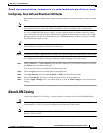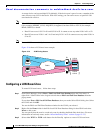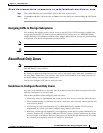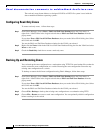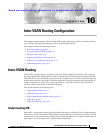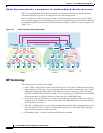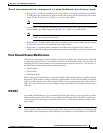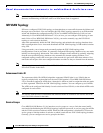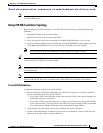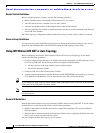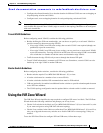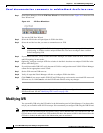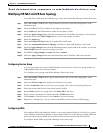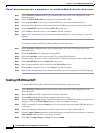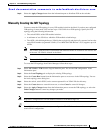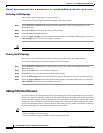
Send documentation comments to mdsfeedback-doc@cisco.com.
16-5
Cisco MDS 9000 Family Fabric Manager Configuration Guide
OL-6965-03, Cisco MDS SAN-OS Release 2.x
Chapter 16 Inter-VSAN Routing Configuration
Inter-VSAN Routing
Note You must update the service group and distribute it using CFS whenever a fabric reconfiguration affects
an IVR-enabled switch.
Using IVR NAT and Auto Topology
Before configuring an IVR SAN fabric to use IVR NAT and auto-topology, consider the following
guidelines:
• Configure IVR only in the relevant switches.
• Enable CFS for IVR on all switches in the fabric.
• Verify all switches in the fabric are running Cisco MDS SAN-OS Release 2.1(1a) or later.
• Acquire a mandatory Enterprise License Package or SAN-EXTENSION license package if you have
Cisco MDS SAN-OS Release2.1(1a) or later and one active IPS card for this feature.
Note IVR is bundled with the Cisco MDS 9216i switch and does not require a license.
Tip If you change any FSPF link cost, ensure that the FSPF path distance (that is, the sum of the link costs
on the path) of any IVR path is less than 30,000.
Note IVR-enabled VSANs can be configured when the interop mode is enabled (any interop mode) or disabled
(no interop mode).
Note In an IVR NAT configuration, if one VSAN in the IVR topology is configured with static domain IDs,
then the IVR domains that can be exported to that VSAN must also be assigned static domains.
Transit VSAN Guidelines
Consider the following guidelines for transit VSANs:
• Besides defining the IVR zone membership, you can choose to specify a set of transit VSANs to
provide connectivity between two edge VSANs:
–
If two edge VSANs in an IVR zone overlap, then a transit VSAN is not required (though, not
prohibited) to provide connectivity.
–
If two edge VSANs in an IVR zone do not overlap, you may need one or more transit VSANs
to provide connectivity. Two edge VSANs in an IVR zone will not overlap if IVR is not enabled
on a switch that is a member of both the source and destination edge VSANs.
• Traffic between the edge VSANs only traverses through the shortest IVR path.
• Transit VSAN information is common to all IVR zone sets. Sometimes, a transit VSAN can also
double-up as an edge VSAN in another IVR zone.



